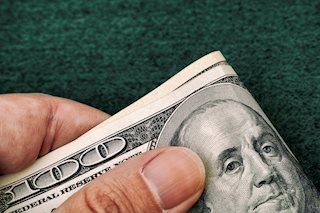US Dollar Index falls toward 102.00 as dovish Fedspeak raises odds of a Fed rate-cut
|
- The US Dollar Index extends its losses following the dovish comments from Fed officials.
- San Francisco Fed President Mary Daly emphasized that the US central bank should reduce rates gradually.
- The decline in the US yields contributes to the weakening of the Greenback.
The US Dollar Index (DXY), which measures the value of the US Dollar (USD) against other six major currencies, extends its losses for the second successive day, hovering around 102.10 during the Asian hours on Monday.
The US Dollar continues to weaken following dovish comments from Federal Reserve (Fed) officials, which have increased expectations for an interest rate cut by the central bank in September. Furthermore, last week’s US economic data revealed that both the Producer Price Index (PPI) and Consumer Price Index (CPI) suggest that inflation is easing.
Federal Reserve Bank of San Francisco President Mary Daly stressed on Sunday that the US central bank should adopt a gradual approach to lowering borrowing costs, according to the Financial Times. Daly countered economists' concerns that the US economy is facing a sharp slowdown that would warrant rapid interest rate cuts.
Additionally, Federal Reserve Bank of Chicago President Austan Goolsbee cautioned that central bank officials should be careful not to maintain a restrictive policy longer than necessary. Although it's uncertain whether the Fed will cut interest rates next month, failing to do so could negatively impact the labor market, according to CNBC.
Additionally, the decline in the US yields contributes to downward pressure for the Greenback. 2-year and 10-year yields on US Treasury bonds stand at 4.05% and 3.88%, respectively, at the time of writing. This week, all eyes will be on Federal Reserve Chair Jerome Powell's upcoming speech.
US Dollar FAQs
The US Dollar (USD) is the official currency of the United States of America, and the ‘de facto’ currency of a significant number of other countries where it is found in circulation alongside local notes. It is the most heavily traded currency in the world, accounting for over 88% of all global foreign exchange turnover, or an average of $6.6 trillion in transactions per day, according to data from 2022. Following the second world war, the USD took over from the British Pound as the world’s reserve currency. For most of its history, the US Dollar was backed by Gold, until the Bretton Woods Agreement in 1971 when the Gold Standard went away.
The most important single factor impacting on the value of the US Dollar is monetary policy, which is shaped by the Federal Reserve (Fed). The Fed has two mandates: to achieve price stability (control inflation) and foster full employment. Its primary tool to achieve these two goals is by adjusting interest rates. When prices are rising too quickly and inflation is above the Fed’s 2% target, the Fed will raise rates, which helps the USD value. When inflation falls below 2% or the Unemployment Rate is too high, the Fed may lower interest rates, which weighs on the Greenback.
In extreme situations, the Federal Reserve can also print more Dollars and enact quantitative easing (QE). QE is the process by which the Fed substantially increases the flow of credit in a stuck financial system. It is a non-standard policy measure used when credit has dried up because banks will not lend to each other (out of the fear of counterparty default). It is a last resort when simply lowering interest rates is unlikely to achieve the necessary result. It was the Fed’s weapon of choice to combat the credit crunch that occurred during the Great Financial Crisis in 2008. It involves the Fed printing more Dollars and using them to buy US government bonds predominantly from financial institutions. QE usually leads to a weaker US Dollar.
Quantitative tightening (QT) is the reverse process whereby the Federal Reserve stops buying bonds from financial institutions and does not reinvest the principal from the bonds it holds maturing in new purchases. It is usually positive for the US Dollar.
Information on these pages contains forward-looking statements that involve risks and uncertainties. Markets and instruments profiled on this page are for informational purposes only and should not in any way come across as a recommendation to buy or sell in these assets. You should do your own thorough research before making any investment decisions. FXStreet does not in any way guarantee that this information is free from mistakes, errors, or material misstatements. It also does not guarantee that this information is of a timely nature. Investing in Open Markets involves a great deal of risk, including the loss of all or a portion of your investment, as well as emotional distress. All risks, losses and costs associated with investing, including total loss of principal, are your responsibility. The views and opinions expressed in this article are those of the authors and do not necessarily reflect the official policy or position of FXStreet nor its advertisers.